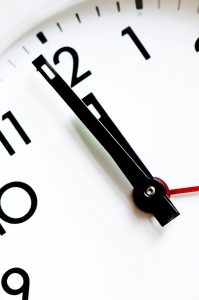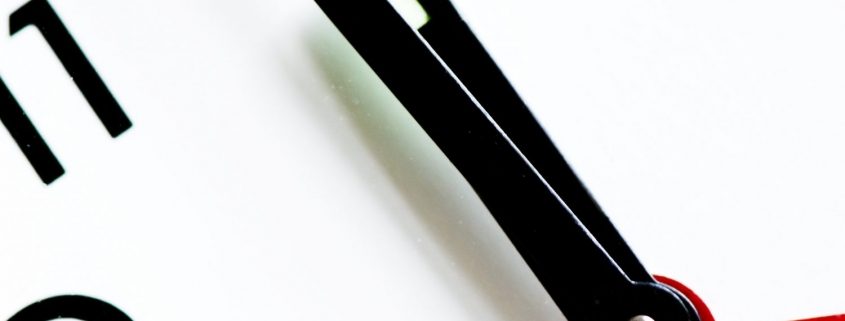Ask Crystal: Housetraining Troubleshooting
Welcome to “Ask Crystal,” where you can ask your pet behavior questions! You can submit your question for Crystal at the bottom of the page!
Dear Crystal,
I recently adopted a 5-year-old dog a couple of weeks ago from a shelter. Poor guy has obviously had a rough time of it. The biggest issue we are having at the moment, is that he is not housetrained at all. He has been going both pee and poop inside on my carpets. I admit I haven’t had to housetrain a dog in a very long time but I am just stymied. I can’t seem to get the idea across to him. Can you offer any suggestions?
Sincerely,
House training woes
Dear House,
Kudos to you for adopted an adult dog. I happen to think that five is the absolute best age for a dog. While we may not know the history of the dog, we can hypothesize that if he is not house trained, he was either kept outside or lived inside with people that just lived with the house soiling. If he is used to eliminating inside, then we will have to undo some previous learning. If he lived outside, while he may be used to going outside which is good, he may not understand a schedule and that he shouldn’t go inside. It may be a longer process because you will have to undo that previous learning and help him to make a different and what may seem to him more difficult choice. There is also often the possibility that the dog was housetrained in a previous home and just has not generalized to the new environment yet. I would recommend handling it in pretty much the same manner.

A trip to the vet may be the first step just to eliminate any medical cause for the dog’s housetraining issues. There are medical conditions which can cause house soiling issues such as bladder infections, kidney failure, liver disease, food allergies, parasites, inflammatory bowel disease, incontinence and diabetes. I especially recommend a vet check any time a pet that is previously house trained regresses.
The first step to any behavior program is always going to be management. We need to prevent the dog from having accidents. For a dog with a history of going potty inside the house, I favor the umbilical cord method. This means that at all times except when confined the dog should be attached to you with a leash. This way he can’t wander off and if he does need to go outside you should be able to see the signs of restlessness that proceed the elimination. You can also tether him to a heavy piece of furniture or door. Baby gates are a great tool to keep the dog in the same area if you are staying in once place for a while but when you move around the house he needs to come with you. You will also need a plan for when you are not home or need to sleep. A crate is a great tool for housetraining but keep in mind that dogs don’t usually like going into a crate until they have been conditioned that it is a pleasant, safe place to be. Crate training takes time to acclimate the dog to and it may be a week or so until your dog is comfortable enough for you to be able to close the door on them in there. You may need an alternate space like a bathroom or utility room where the dog can be confined until then. If you have a small dog, you may be able to put an exercise pen in a tiled area with the crate inside with the door open.

Establishing routines is going to be very helpful in being able to predict when the dog needs to go out. In the beginning, I would suggest that the dog needs to go out once an hour at least and that is in addition to going out when waking up, after meal times, after playing, before bed, before you leave for the day and when you come home. I suggest that you feed at specific times, give the dog a few minutes to eat and then pick up the bowl. If you free feed your dog, there may not be any way to tell when they eat exactly and therefore it is harder to predict elimination needs. As you get to know your dog’s body, you will learn how long it takes for them to need to eliminate. Some dogs need to go out 15 minutes after eating and some dogs it may take longer. It will really pay off to pay attention to your dog’s schedule.
Another crucial part of the housetraining process is that you must go outside with the dog to watch it eliminate and reinforce that behavior. A lot of people let the dog out and assume that it is eliminating outside and then it comes in and has an accident. If you don’t reinforce the pottying outside, the dog will not learn that it is the preferred behavior. When you see the signs such as sniffing, circling, pacing, whining, licking their groin, or sudden change in behavior, you need to get to his potty spot toot sweet. It is helpful in the beginning to have a potty spot that you go to every single time. When the dog is about to go, I like to say “go potty” so that I can put the behavior on a cue which can help for those times when I am in a hurry. Always follow the elimination with a really amazing treat. Verbal praise in not going to be reinforcing enough in this situation. You need to really get the point across that this was an amazing thing he just did. Don’t be a cheap date, give him the good stuff! After the successful elimination be sure to have a short play session or walk around a bit longer. So many people immediately take the dog back inside which creates an association with going back inside after elimination. This can cause a dog to start to delay going to the bathroom because they want to delay having to go back inside. If he doesn’t go potty when you take him outside, it is very important to keep him close to you or confined at those times.
If you find that your dog is having accidents, you may not be watching him closely enough. If he is having accidents out of sight, then you are giving him too much freedom. If you do catch him in the act, interrupt the behavior with an eh-eh and quickly usher him to his spot. Dog have an association period of about 1 second so if you find an accident in the house you really can’t do anything except clean it up and try to do better next time. You are going to need to invest in a whole lot of enzymatic cleaning products to clean up the accidents. Dogs will go back to the spots that they have already used in the past so eliminating the smell is essential.
It will probably be a frustrating and exhausting time for the next few weeks. As your dog goes longer without an accident, you can start to allow him a little more freedom. The process is going to take time and patience but hopefully you can get there with diligence.
Until next time,
Crystal







